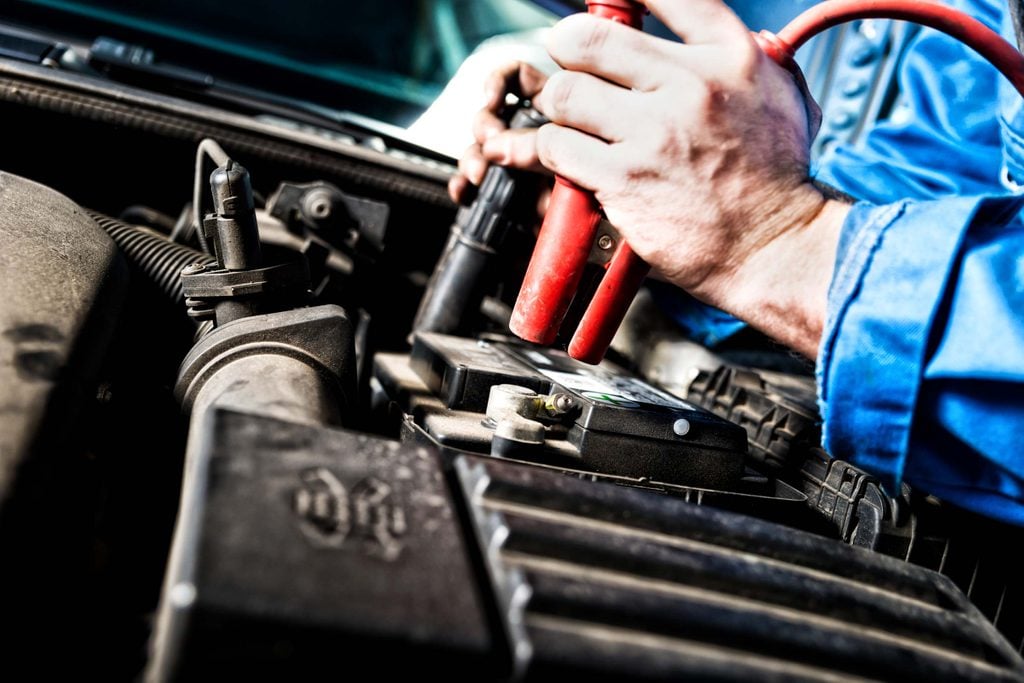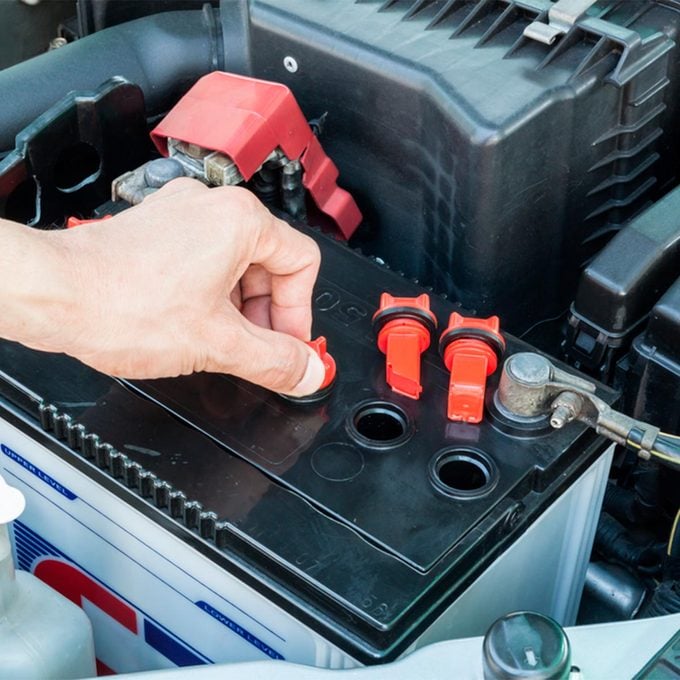How to Increase Your Car Battery’s Life
Updated: Feb. 07, 2024

Double that car battery life and save some serious dough! These tips will keep your car's battery in tip-top condition for as long as possible.
There’s nothing worse than stepping out into a cold parking lot only to find your car won’t start. While there could be a few reasons your vehicle isn’t starting, a dead battery is a common cause. You can always jump start your car in those situations, but it’s still best to avoid them. And the best way to do that is to take proper care of your battery.
But batteries don’t last forever, and eventually, you will have to replace your car battery. However, if you take care of it, you can maximize the life of the battery, saving some money in the long run and not have to worry about finding yourself in a dark, cold parking lot with a car that won’t start.
On This Page
How Long Do Car Batteries Last?
Typically car batteries will last you four to six years. However, some factors could get in the way of the car or RV battery life time frame such as weather conditions, vehicle type, or even how you drive your car.
Drive Longer Distances More Frequently
You car’s alternator is what keeps the battery charged, charging it while the car runs. However, according to the Motor Trade Association, frequent short trips could actually contribute to a shorter lifespan for car batteries. Car batteries recharge at longer distances and will receive a full charge after eight hours of use, while the alternator has more time to recharge it. If a battery isn’t receiving a full charge, strong crystalline deposits can form on the negative plates and can actually prevent the battery from receiving a proper charge.
Now, that doesn’t mean you need to drive the car eight hours on the daily, but it does mean you should be careful with the amount you are using the electric auxiliary controls within the car. The car’s lights, heater fan, and radio can all drain the battery that they rely on to operate.
Keep Battery in Neutral Temperatures
Batteries typically can withstand most types of temperatures, but extreme hot (and extreme cold) can cause problems. Hot temperatures can cause battery fluid to evaporate, which can actually cause problems of overcharging. This actually decreases the lifespan of your battery.
Colder temperatures will actually cause self-discharge, which will ultimately lead to a dead battery. The battery’s electrolytes can even freeze and cause issues internally and externally on the battery’s case. If your car is going to be idle during winter months, it would be safe to find a space with a neutral temperature for the car. Check out our guide to battery insulation.
Invest in a Battery Maintainer
Are you locking up a car, or maybe even a boat, for the colder months? Idle batteries can actually lose their charge, so you’ll want to keep the battery alive during those winter months. Batteries should be charged every six weeks in order to be healthy. However, this does not mean that the battery should be sitting on a charger because that could actually shorten its life. Instead, a battery maintainer will help to monitor the battery voltage and automatically adjust the charge to avoid under and overcharging it.
Clean Your Car Battery
It’s important to look for corrosion on your battery. Corrosion is when a white powder is around the nodes or clamps of the battery. You can clean the clamps with baking soda, water, and a nonmetallic brush. It’s especially important to be doing this when your battery isn’t corroded. Corrosion means it’s probably time for a new battery, but if you are keeping it clean, it could increase longevity.
Maintenance-Free vs. Maintainable Batteries
Sometimes batteries get run down, but they don’t necessarily need to be replaced. It may just need a charge, or, if it’s an old battery near the end of its life span, it could be unable to hold a charge, in which case it needs to be replaced.
There are two kinds of car batteries, maintainable and maintenance-free. Most cars on the road today have the later. Maintainable batteries, also called non-maintenance-free and wet cell batteries, have removable filler caps on top of the battery.
As a maintainable battery discharges and recharges, battery fluid changes to a gas and evaporates. This requires the battery fluid to be refilled from time to time. Summer heat can also cause the battery fluid to evaporate. These types of batteries are more common these days on boats and utility vehicles.
Maintenance-free batteries are designed to maintain fluid levels, so you don’t have to worry about topping off the electrolyte fluid within. They last longer too.
Because both types of batteries contain battery fluid, a mixture of sulfuric acid and distilled water (called electrolyte), they should be handled with care.

How to Test You Car Battery Voltage
You’ll know it’s time to test your battery if a vehicle is
The easiest way to test your car’s battery is with a multimeter, a voltmeter or a specific car battery tester. Open the hood of the vehicle, connect the multimeter’s positive, red, connector to the positive terminal on the batter, and then connect the negative connector to the negative terminal. You may have to remove the protective cover on the battery terminals.
With the multimeter connected, turn on the tester and switch it to voltage mode. A fully charged battery will read 12.6 volts, and anything between 12.2 and 12.6 volts for a resting battery is an acceptable range. Lower than that, it probably means you need to charge you battery or replace it.
Next, you need to test the battery on the car’s crank cycle. When the car is first turned on, voltage will drop for a brief moment, but it shouldn’t fall below 10 volts. If it does, that means the battery is weak, and it will need to be charged or replaced.
Finally, you’ll want to look at the battery’s voltage level with the car running. At that point, the voltage meter should show a reading the range of 14 to 14.5 volts.
How to Test a Maintainable Battery
If your car has a non-maintenance-free battery, you may need to test the electrolyte in each cell. For this, you’ll need a battery hydrometer.
To start, open the filler caps for the six cells on top of the battery. Drop the end of the hydrometer in each one and squeeze the ball to draw the solution into the tester. Carefully hold the tester level and write down the reading. Squirt the solution back into the same cell.
The testers are calibrated assuming a battery is at 80 degrees F. Add .04 to each reading for every 10 degrees above 80 and subtract .04 for every 10 degrees below. If you get a cell reading that differs from the others by .05 or more, replace the battery. A fully charged battery should have a reading of 1.265 or higher. If all the readings show fair or low (1.200 is low) but are consistent, recharge the battery.
In some cases, a paintable battery will have an indicator on the top that glows green if the water level is good and fully charged, and goes dark if the battery needs fluid or is discharged. If it’s yellow, it usually means that the battery fluid level is low, or the battery is defective.